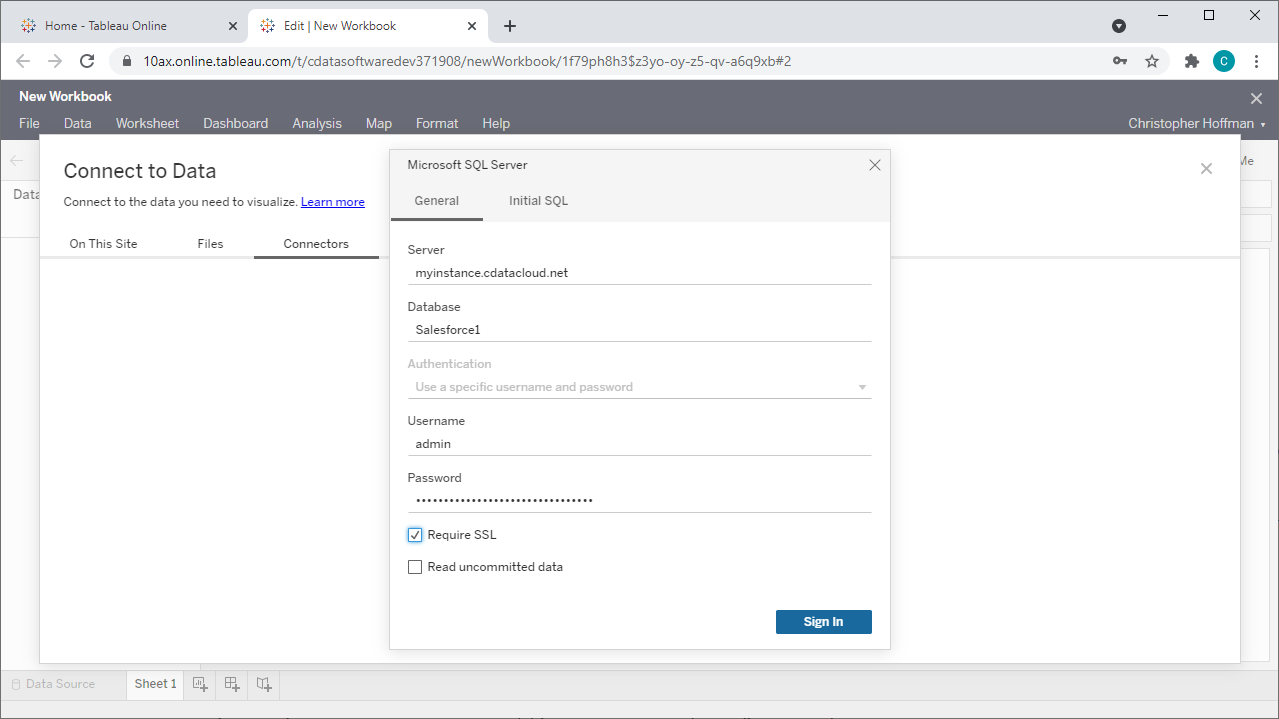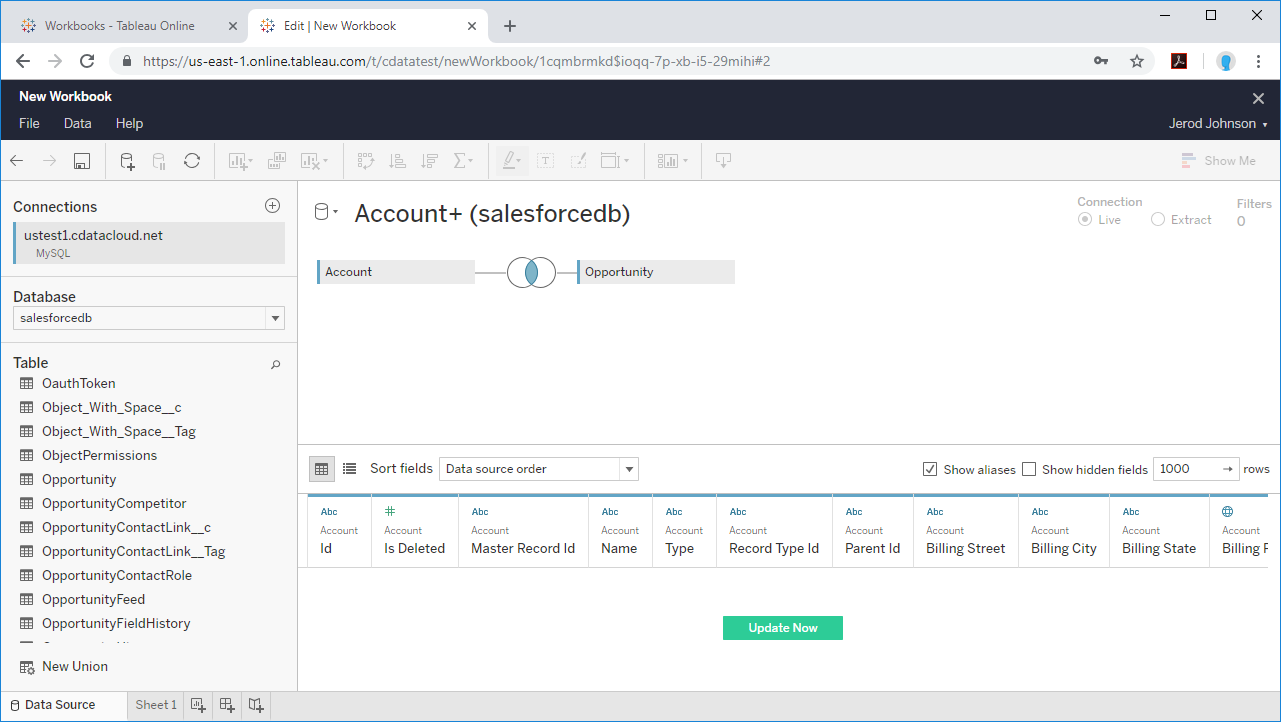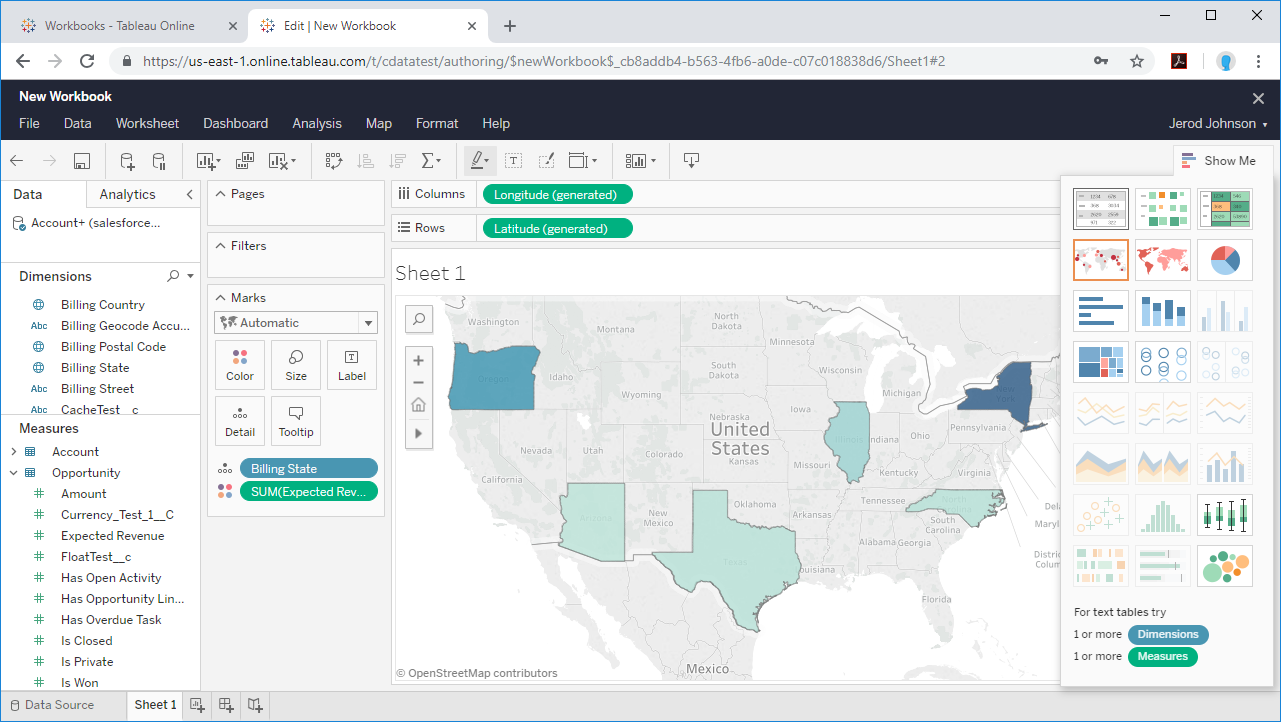Discover how a bimodal integration strategy can address the major data management challenges facing your organization today.
Get the Report →Build Kafka Visualizations in Tableau Cloud
Use CData Connect Server to create a virtual SQL Server Database for Kafka data and build visualizations in Tableau Cloud.
Tableau Cloud is an analytics platform fully hosted in the cloud. When paired with CData Connect Server, you get instant, cloud-to-cloud access to Kafka data for visualizations, dashboards, and more. This article shows how to create a virtual database for Kafka and build visualizations from Kafka data in Tableau Cloud.
CData Connect Server provides a pure SQL Server interface for Kafka, allowing you to easily build visualizations from live Kafka data in Tableau Cloud without installing connectors or publishing worksheets and data sources from Tableau Desktop. As you build visualizations, Tableau Cloud generates SQL queries to gather data. Using optimized data processing out of the box, CData Connect Server pushes all supported SQL operations (filters, JOINs, etc) directly to Kafka, leveraging server-side processing to quickly return Kafka data.
Create a Virtual SQL Server Database for Kafka Data
CData Connect Server uses a straightforward, point-and-click interface to connect to data sources and generate APIs.
- Login to Connect Server and click Connections.
![Adding a connection]()
- Select "Kafka" from Available Data Sources.
-
Enter the necessary authentication properties to connect to Kafka.
Set BootstrapServers and the Topic properties to specify the address of your Apache Kafka server, as well as the topic you would like to interact with.
Authorization Mechanisms
- SASL Plain: The User and Password properties should be specified. AuthScheme should be set to 'Plain'.
- SASL SSL: The User and Password properties should be specified. AuthScheme should be set to 'Scram'. UseSSL should be set to true.
- SSL: The SSLCert and SSLCertPassword properties should be specified. UseSSL should be set to true.
- Kerberos: The User and Password properties should be specified. AuthScheme should be set to 'Kerberos'.
You may be required to trust the server certificate. In such cases, specify the TrustStorePath and the TrustStorePassword if necessary.
![Configuring a connection (SQL Server is shown).]()
- Click Save Changes
- Click Privileges -> Add and add the new user (or an existing user) with the appropriate permissions.
With the virtual database created, you are ready to build visualizations in Tableau Cloud.
Visualize Live Kafka Data in Tableau Cloud
The steps below outline creating a new data source in Tableau Cloud based on the virtual Kafka database in Connect Server and building a simple visualization from the data.
- Log into Tableau Cloud, select a project, and create a new workbook.
- In the new workbook, choose the Microsoft SQL Server Connector from the data wizard and fill in the values for your Connect Server instance.
NOTE: Be sure to check the "Require SSL" checkbox. - Select your newly created database and the table(s) you wish to visualize (defining relationships for JOINed tables as needed).
- Select Dimensions and Measures and configure your visualization.



SQL Access to Kafka Data from Applications
At this point, you have a direct connection to live Kafka data from your Tableau Cloud workbook. You can create new visualizations, build dashboards, and more, with no need to publish data sources and workbooks from Tableau Desktop. For more information on gaining SQL access to data from more than 100 SaaS, Big Data, and NoSQL sources from cloud applications like Tableau Cloud, refer to our Connect Server page.








